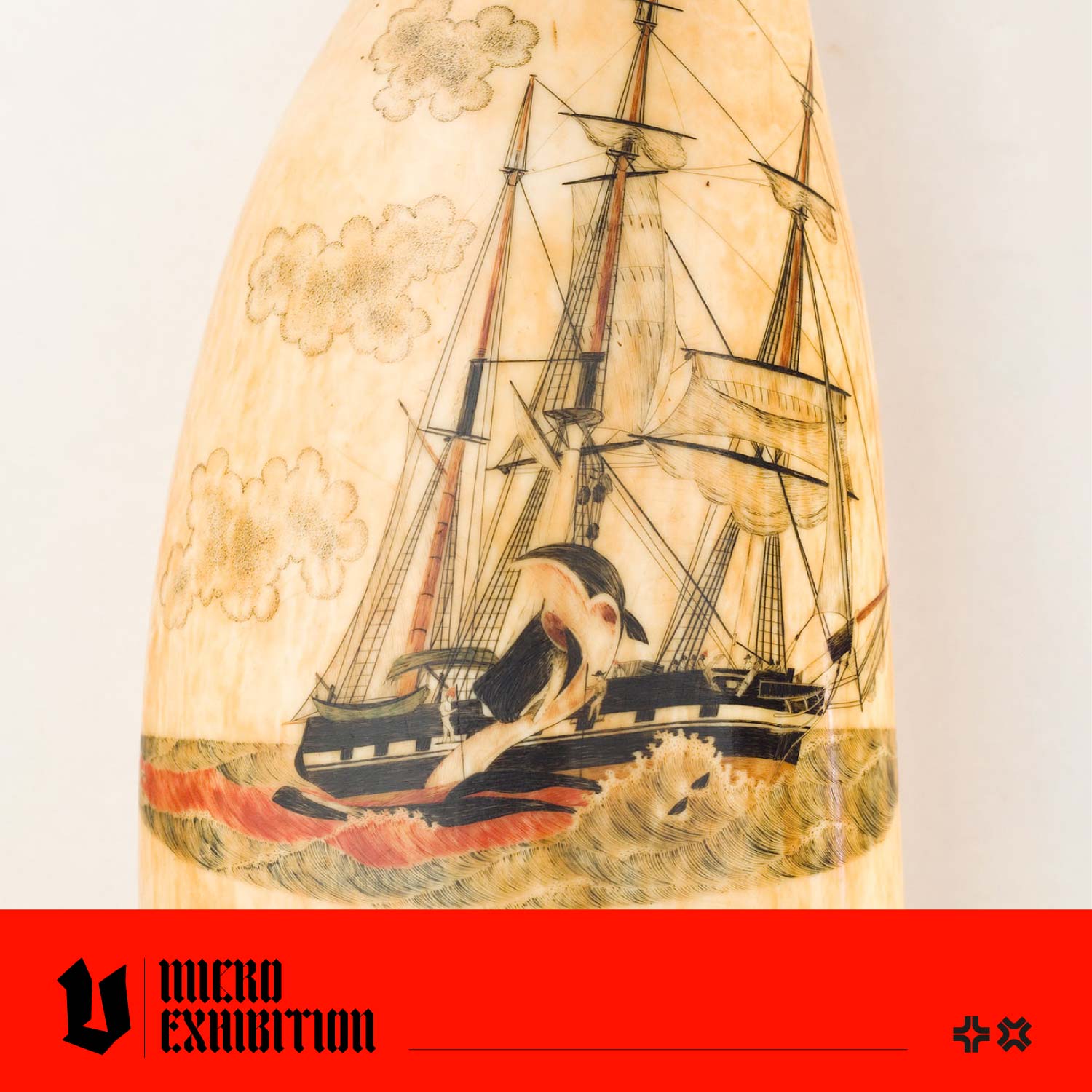The Art of Etching Stories: Delving into the Fascinating World of Scrimshaw
Scrimshaw is a unique art form that involves the creation of carvings or engravings on bone or ivory by whalers. The artist, known as a scrimshander, meticulously prepares their substrate by smoothing and polishing it with sharkskin or pumice. Then, they would intricately carve the design into the material with a knife or sharp-tipped instrument. The final touch involved filling the grooves with colour, usually black, in a process akin to creating a woodblock. These artworks could be solely decorative but also serve practical purposes, and people made toys, walking sticks, and pocket watch holders in this way. Whalers crafted these items as gifts for family or friends or for trading.

American whaling ships, scrimshaw on whale tooth, c. 1800
What Are Typical Scrimshaw Designs?
Scrimshaw designs were as diverse as the imaginations of the scrimshanders. While scenes of life at sea, sperm whaling, portraits of ships, and fashionable women were popular, a wide range of subjects found their way onto scrimshaw designs, including flowers, Masonic emblems, coats of arms, and the Irish harp. The nature of the artwork makes it challenging to identify the author of the scrimshaw pieces and to date the work. However, contemporary historians can glean clues from the image, such as the style of clothing on the female figures, the design of the ships, and occasional inclusions of ship names.

Scrimshaw via the New Bedford Whaling Museum
When and Where Was Scrimshaw Popular?
Scrimshaw peaked between 1830 and 1860. The majority of the scrimshanders were from America, but it was a popular craft with British and Australian whalers, and significant collections can be found in all three countries. Scrimshaw continues to be produced today by whalers in regions such as the Chukchi of Siberia and the Eskimos of Siberia and Alaska, as well as inspiring modern artists and craftspeople.
We hope you have enjoyed this introduction to this fascinating craft. To read more, visit Scrimshaw and the identification of sea mammal products by Janet West and Scrimshaw on Britannica.
Scrimshaw via the New Bedford Whaling Museum




